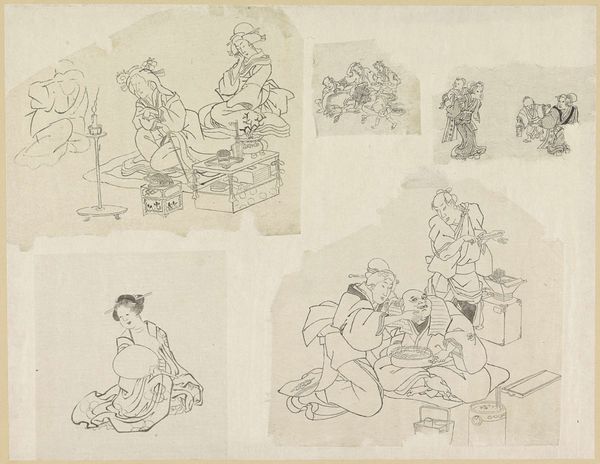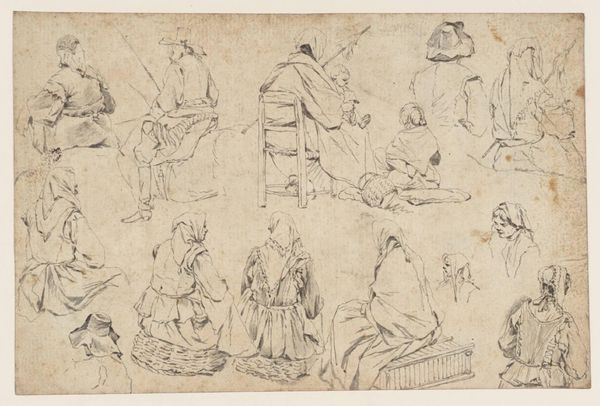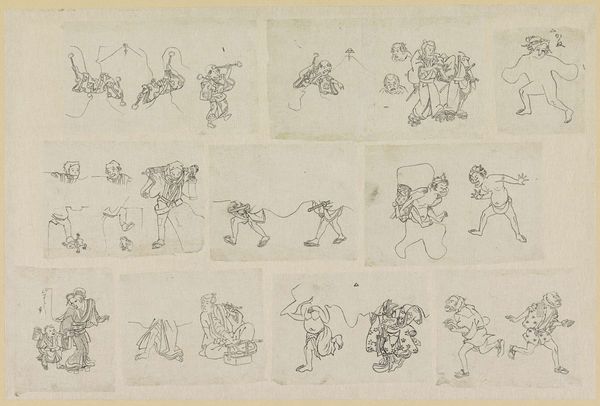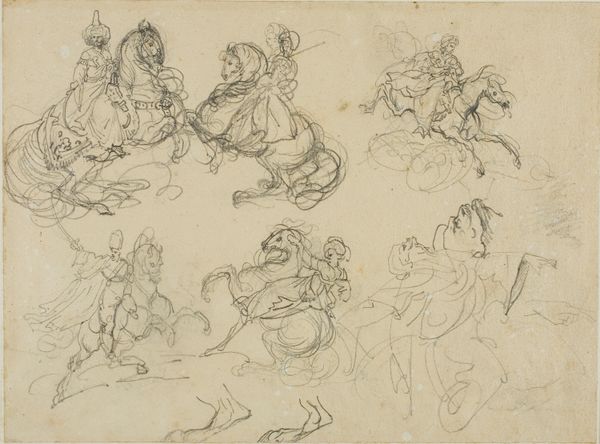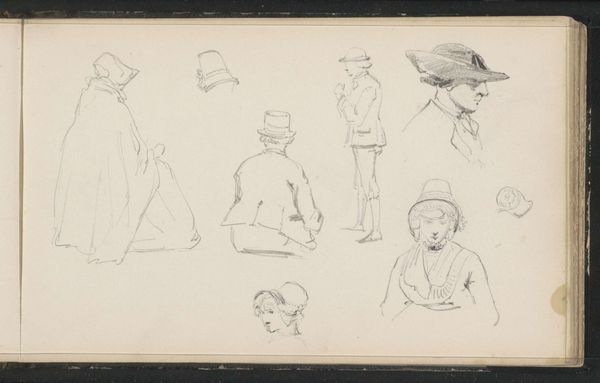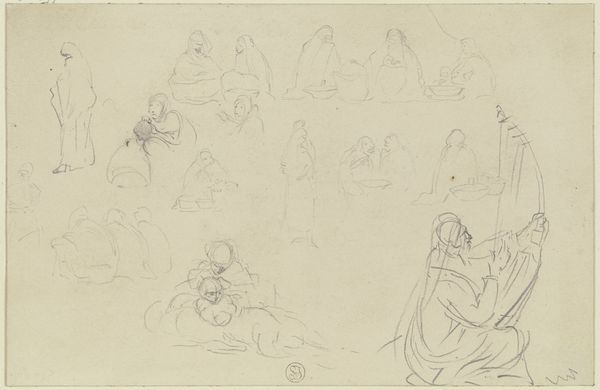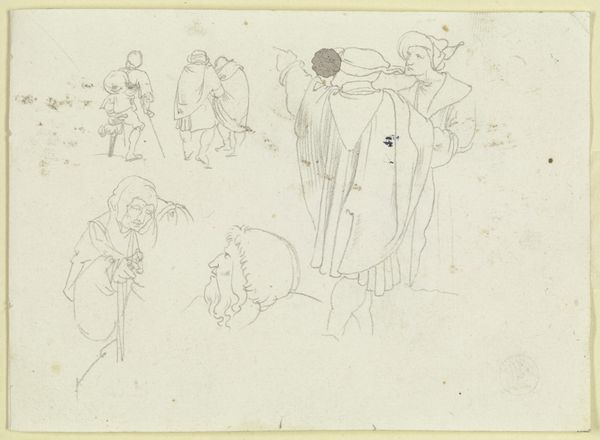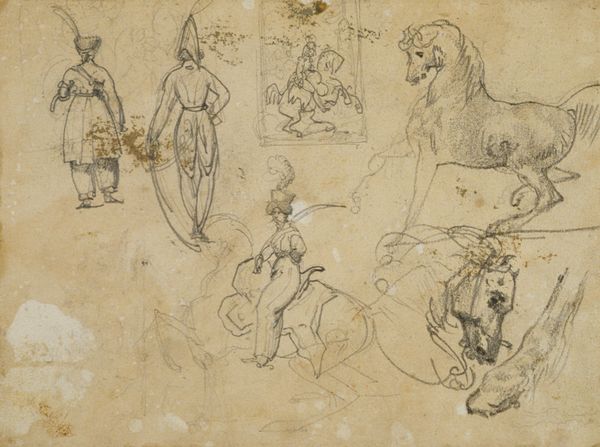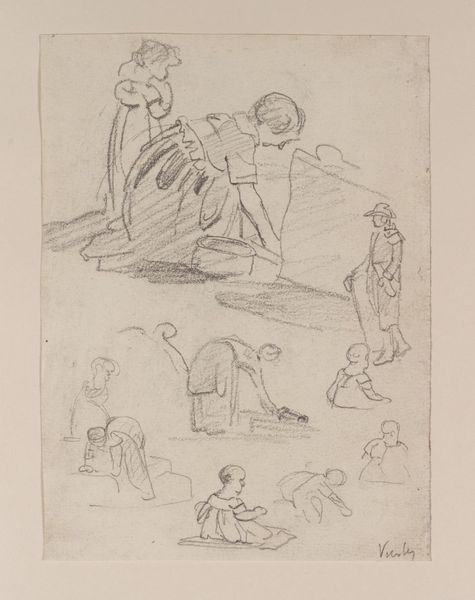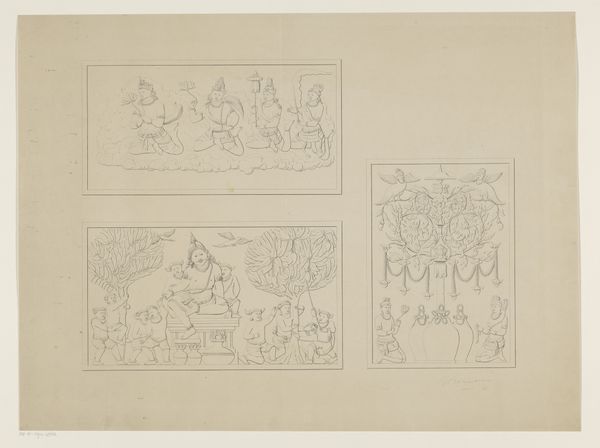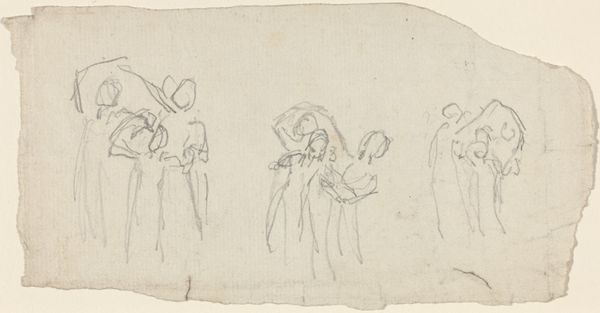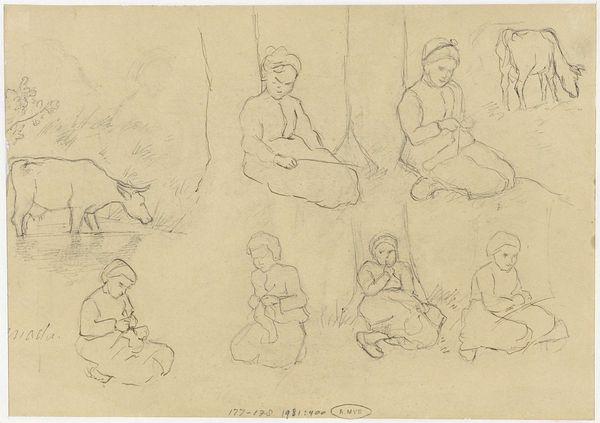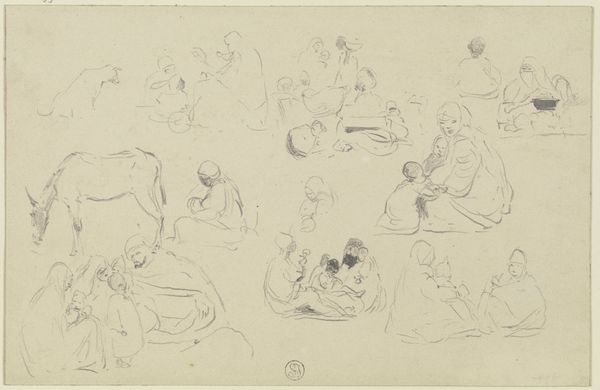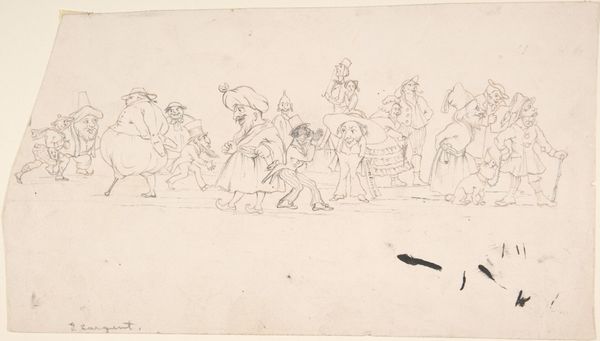
drawing, paper, ink
#
drawing
#
comic strip sketch
#
toned paper
#
light pencil work
#
narrative-art
#
asian-art
#
landscape
#
ukiyo-e
#
figuration
#
paper
#
personal sketchbook
#
ink
#
idea generation sketch
#
sketchwork
#
ink drawing experimentation
#
geometric
#
line
#
sketchbook drawing
#
storyboard and sketchbook work
#
sketchbook art
Dimensions: height 257 mm, width 342 mm
Copyright: Rijks Museum: Open Domain
Curator: Welcome. We're looking at a drawing by Katsushika Hokusai titled "Vier scènes met verschillende figuren," placing it roughly between 1800 and 1900. It's currently held in the Rijksmuseum collection. Editor: It gives the immediate impression of preliminary work, a series of quickly captured ideas. The subdued ink on paper creates a sense of intimacy, like a private glimpse into the artist's process. Curator: Precisely. Hokusai uses ink and light pencil work to sketch multiple narrative vignettes onto a single toned paper. Notice the stark lines; he employs them to delineate figures, landscapes and abstract forms. The structure showcases ukiyo-e sensibilities while highlighting narrative figuration. Editor: The visible labor really fascinates me. You can almost see him testing compositions. The varying degrees of finish, from almost complete scenes to sparse outlines, show how different aspects were handled, emphasizing the actual mechanics of image production. Curator: Observe how Hokusai carefully composes the negative space. Its strategic placement creates visual rhythm, emphasizing the relationship between the figures and landscapes that define the different scenes. The intentional arrangements underscore fundamental pictorial relationships. Editor: This is what grabs me—it feels raw, highlighting Hokusai's experimentation. This pushes us beyond just appreciating a final artwork; it acknowledges the artist's role in the studio, his testing of materials, and his manual skill in constructing images. Curator: Ultimately, this drawing encapsulates Hokusai's technical precision within ukiyo-e, demonstrating both the construction of individual components and their contribution to a holistic visual and narrative framework. Editor: The piece celebrates the working method and allows the viewers an exceptional understanding of production that ultimately expands how we understand finished artworks and celebrate Hokusai.
Comments
No comments
Be the first to comment and join the conversation on the ultimate creative platform.
